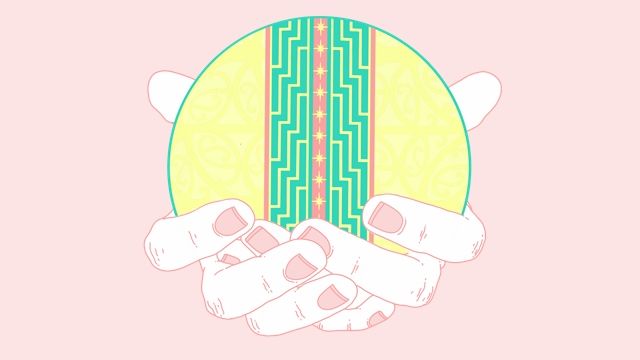May we boundlessly dream of possibilities beyond our wildest imaginations. May we weave communities of support, compassion and active solidarity. With our history in front of us, and our tūpuna at our shoulders, may we walk into a future that is connected and thriving for us all. This is He Kākano Ahau Season 2: Wawatatia.
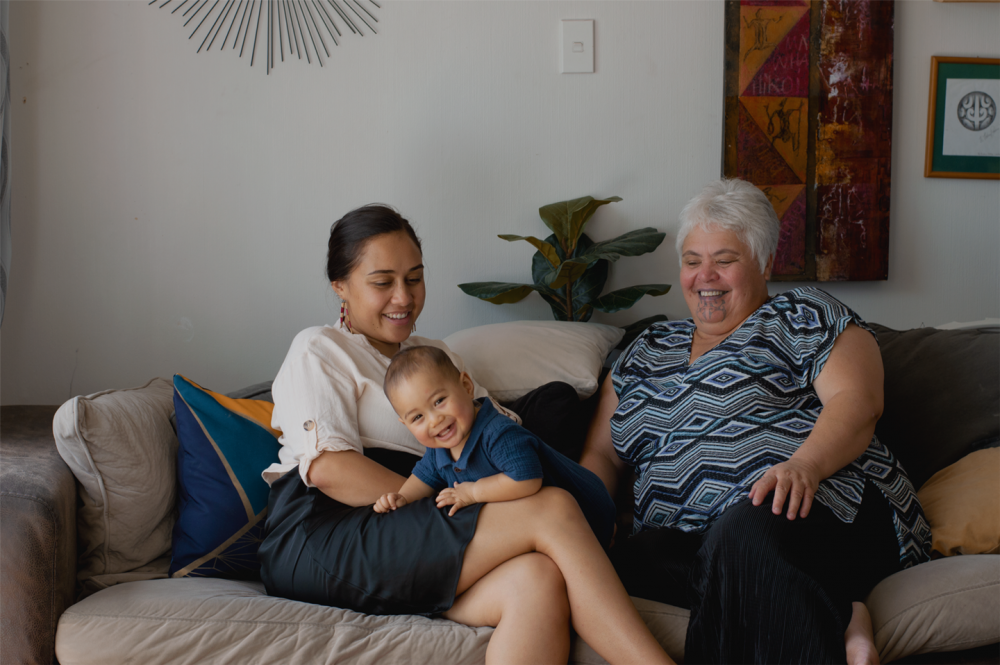
Activist mother-and-daughter duo Whaea Sharon and Mania Campbell-Seymour with Mania's son Repanga Photo: UGP / Kahu Kutia
In the final episode of He Kākano Ahau, we explore intergenerational visions, whakapapa, and future aspirations with a māmā-daughter duo, and a Māori futurist.
Scroll down to the bottom of this article to listen to the podcast.
Intergenerational Vision
By Briar Pomana
Can you imagine how wildly our tīpuna dreamed?
It's evident when we look back and re-examine all those pūrākau, whether this is through our own whānau whakapapa or stories we've heard growing up peeling spuds at the back with the cousins or around the table with our aunties and nannies.
It is in these bursts of laughter, tall tales and often floods of tears we are living, breathing, playful ripples of all those we come from who dared to dream and all those who are yet to come.
This is what He Kākano Ahau: Wawatatia is all about. A podcast of dreams and radical hope in a future that is inclusive, joyful, intimate and full of those moments in between.
When preparing for this season, all the mātauranga and stories felt almost too massive to rope together.
Flash forward and the people involved in this podcast, their experiences, mahi and aspirations now interwoven, have deepened the continual wānanga and given ambition to possibilities for our mokopuna. Kua raranga tahi tātou, he whārangi ipurangi mō apōapō.
In this final instalment of He Kākano Ahau: Wawatatia, Kahu Kutia travels to Te Tairawhiti, to visit two women she has known since her childhood. Mother and daughter duo, Whaea Sharon and Mania Campbell-Seymour are activists from a long line of mana wāhine stretching across Te Tairawhiti, Māhia and Te Whakatōhea.
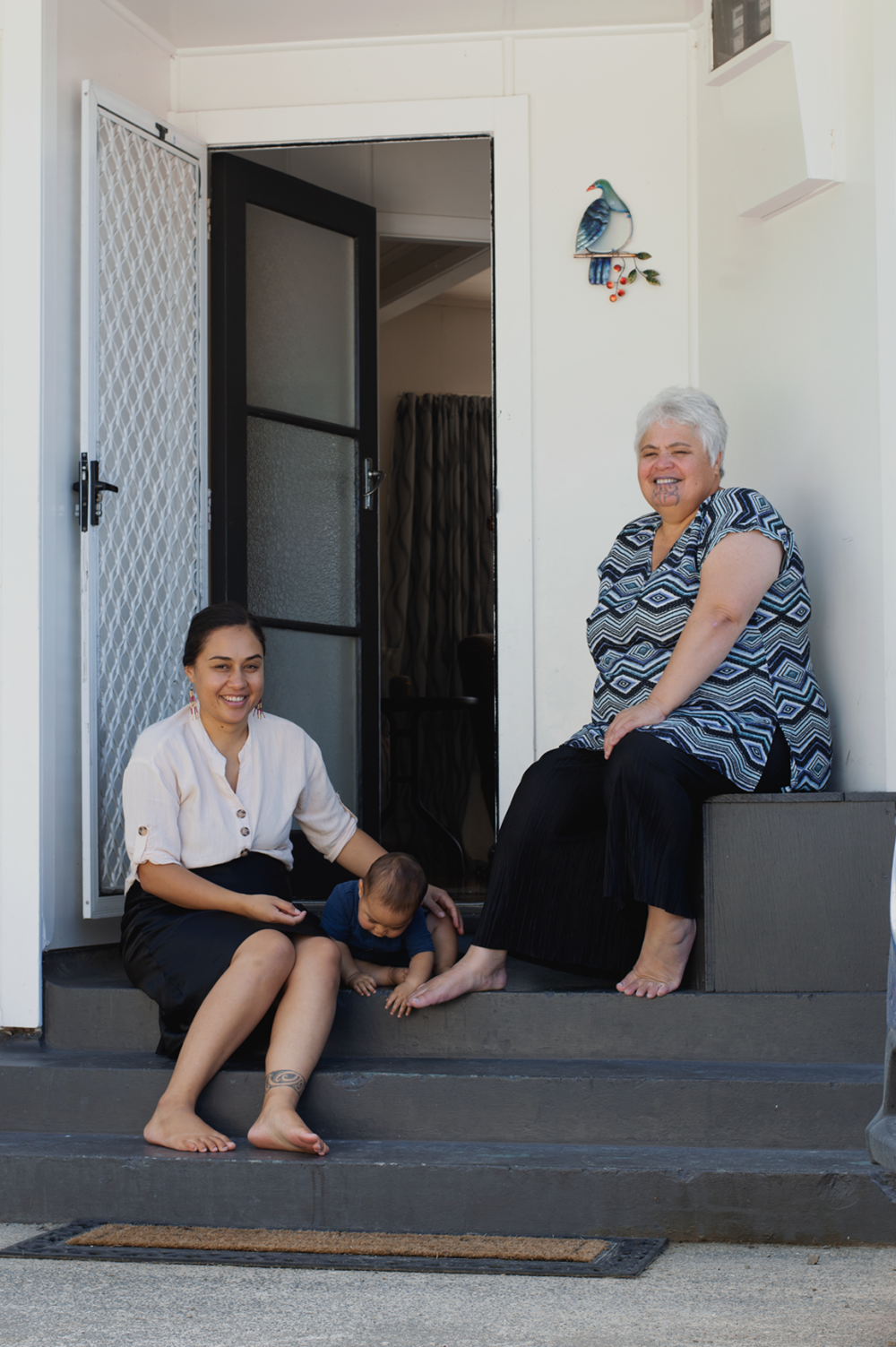
Three generations at home Photo: UGP / Kahu Kutia
Whaea Sharon, a solo mother who put herself through university and has spent the majority of her career working in education, recalls the discomfort in her university lectures and meeting rooms when conversations turned to social issues that affect Māori communities every day.
"I do not accept that we have an education system that pays itself billions of dollars to continue failing our tamariki at the same rate, it is absolutely criminal," Whaea Sharon says.
Working within broken systems is also a field of mahi Mania is actively trying to remould. Mania is an academic, a deep thinker and a doctor.
Similar to kōrero shared by Whaea Sharon, Mania recounts how alienating the medical and university space was and can be for Māori looking to enter professions like medicine.
She explains how heartbreaking it is to see whānau Māori struggling to navigate medical care and exist in systems not built for them and their needs.
Expressing her dismay at working within these institutions and historically racist structures, Mania sticks with it for her whānau, her tamariki and her mokopuna.
"You're trapped because you have to survive and you're working in their shit system that doesn't work, so you don't have the time to heal," says Mania "But that's what we need to do, that's the radical visualisation and where we go to from there."
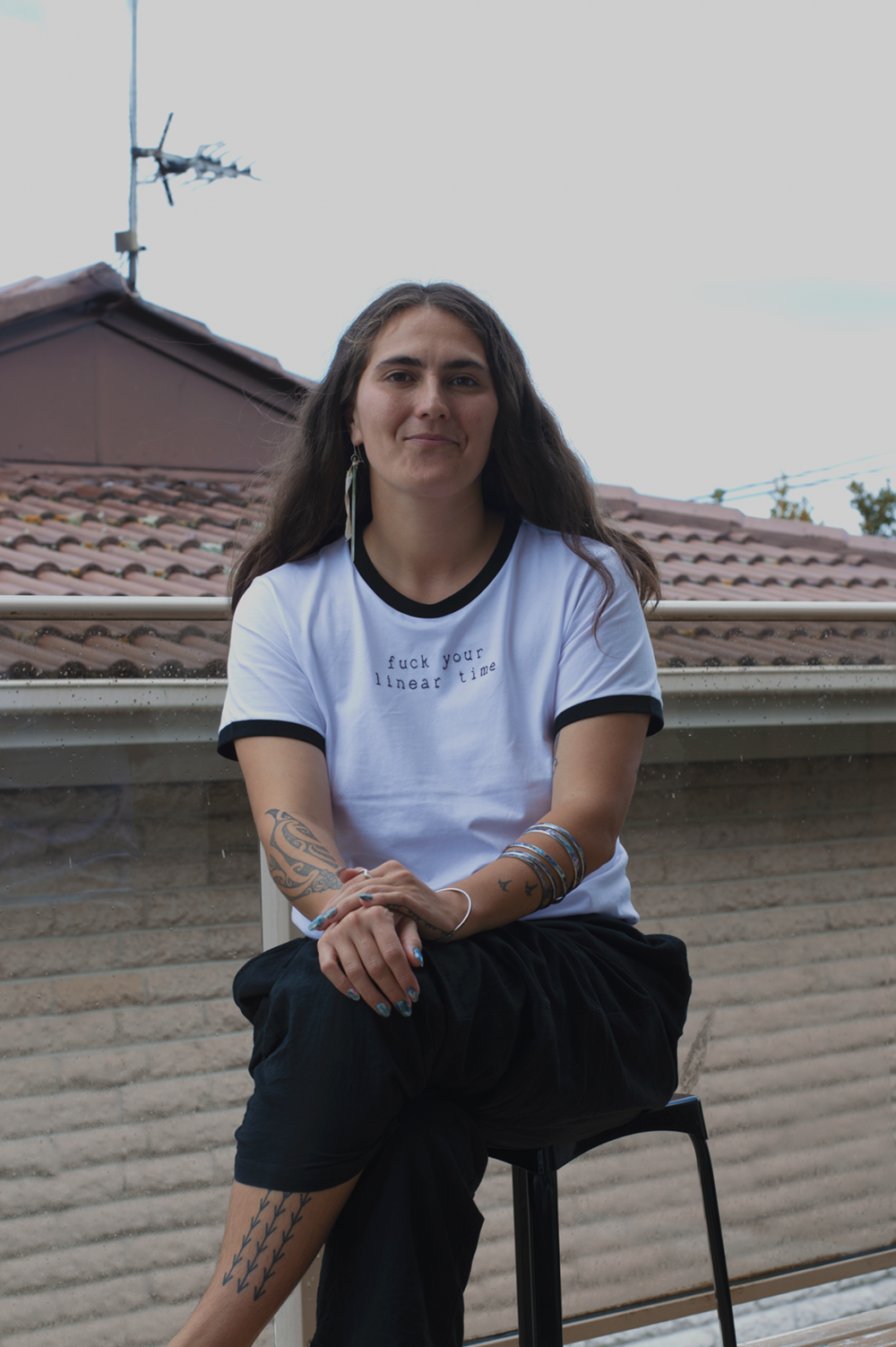
Hana Burgess Photo: UGP / Kahu Kutia
Thinking, dreaming and talking about the future is the wavelength Hana Burgess travels and trips on frequently.
Hailing from the delicious lands of Ngāpuhi and Te Ati Haunui-a-Pāpārangi, she spends her time creating art, writing her PhD discussing whakapapa and genomics, dancing with her mates and pondering the intergenerational transfers of mātauranga and whakapapa as a whole.
Kahu speaks to Hana about her research and the idea that when we know the whakapapa of a person, or a thing, we understand their true origins and positioning in this world. Hana explains this further saying:
"We kind of can understand time through onamata and anamata. So mata meaning 'eyes', onamata - 'the eyes of those who have come before us' and anamata - 'the eyes of those that come after us'. So essentially as Māori, we can see distant time through our mokopuna, the eyes that will come after us and through our tipuna they eyes that came before us."
Hana's words encapsulate the intended āhua of He Kākano Ahau: Wawatatia.
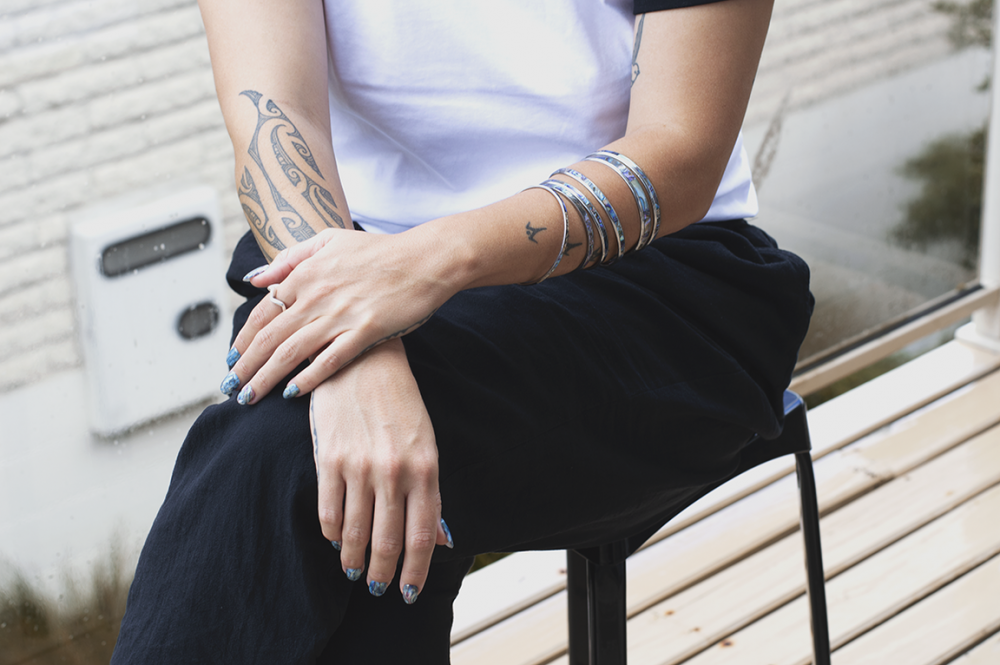
Hana Burgess' obsession with paua Photo: UGP / Kahu Kutia
This vision from tipuna to mokopuna is apparent in the relationship of Whaea Sharon, Mania and the teina of their whānau.
Everything they do now is to ensure their babies and mokopuna do not need to face the same struggles both Whaea Sharon and Mania have - whether this be in education, in healthcare or in the communities they will grow up and participate within.
Keeping these struggles in mind, intergenerational vision can not always be about the traumas and hardships we have faced. Cackles with friends and family are important stories and pūrākau too.
Intergenerational vision can be about collective strength, inherited knowledge, love and whakapapa.
As researched by Hana Burgess, whakapapa is existence, the meeting of tipuna, mokopuna and all things of this world, so it could be argued that all of the episodes of He Kākano Ahau: Wawatatia encompass these ideas and how they flicker in and out of our minds.
Radically dreaming is hard and there are times when it requires us to rest, but it can also be playful and inspiring.
This final installation of He Kākano Ahau: Wawatatia is about the power of thought, the past, present and future all intertwined together and how our existence in the now and future are the manifestations of both our tīpuna and mokopuna.
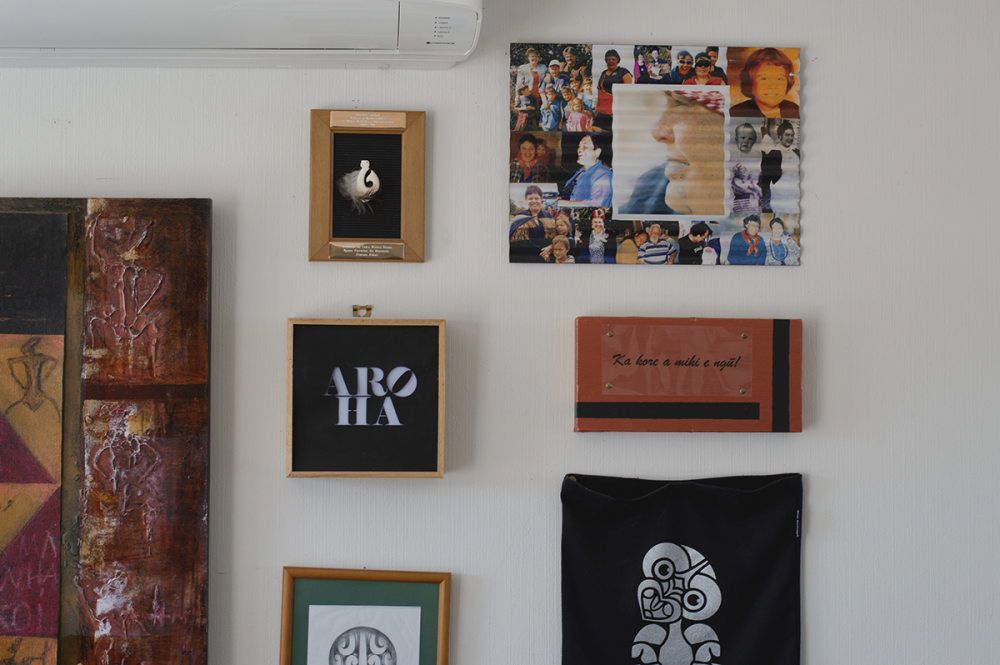
At Whaea Sharons house Photo: UGP / Kahu Kutia
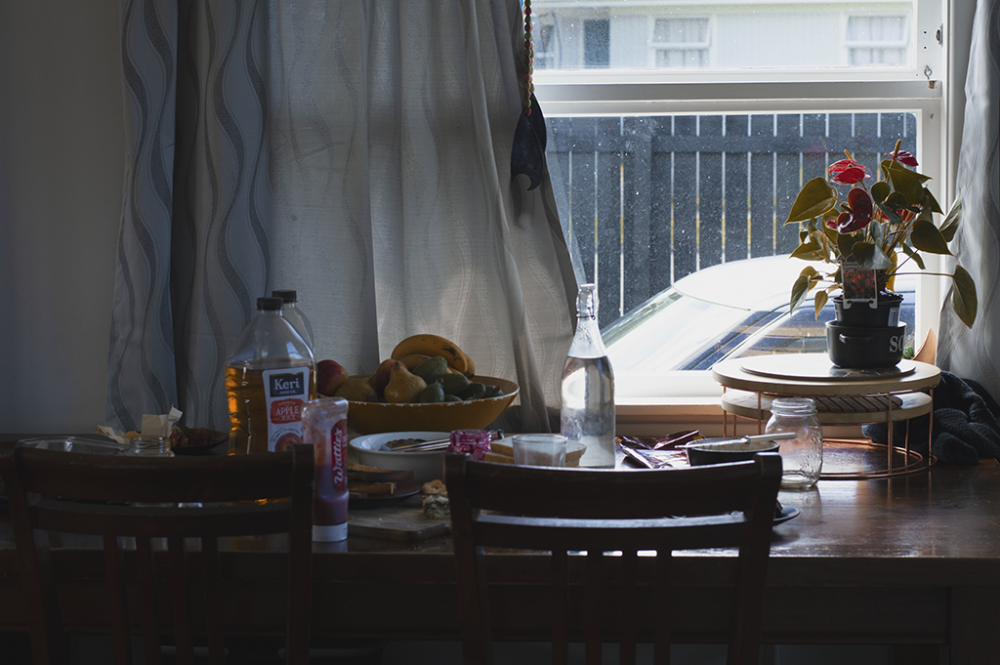
Sharing kai at Whaea Sharons house Photo: UGP / Kahu Kutia
About He Kākano Ahau:
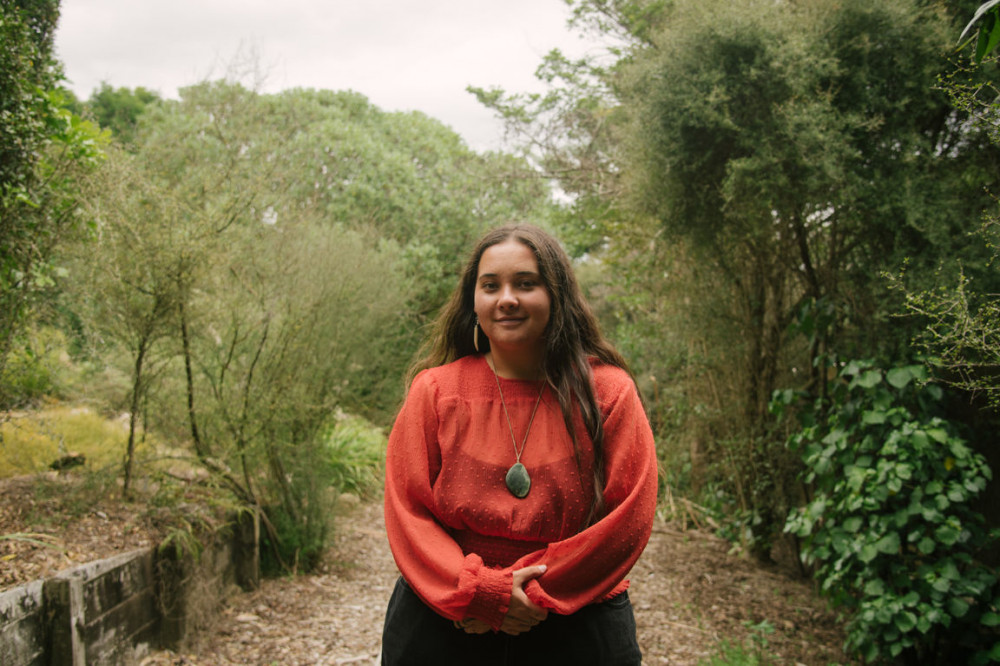
Kahu Kutia Photo: UGP / Dylan Cook
After co-winning Best Episodic/Recurrent Podcast at the 2020 Voyager Media Awards, activist, writer and uri of Ngai Tūhoe, Kahu Kutia returns with season two. She leads a close-knit team across the motu in search of stories woven together by whakapapa and desire to be and exist bigger and better.
This season’s creative team also includes producer and editor, Melody Thomas, of the award-winning sex and sexuality podcast BANG!, journalist, producer and editor Frances Morton continues with He Kākano Ahau alongside producer and award-winning filmmaker Ursula Williams as the podcast’s executive producers. Te Hira Mayall-Nahi (Ngāti Whatua ki Kaipara, Te Rarawa) and Briar Pomana (Ngāti Kahungunu, Ngāti Rakaipaaka), came on board in teina roles to assist with production.

He Kākano Ahau: Wawatatia is a seven-episode series, including two episodes in te reo Māori. Our target audience is young Māori, but we hope the stories make space for everyone to listen in.
